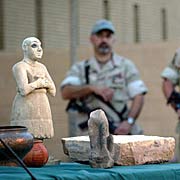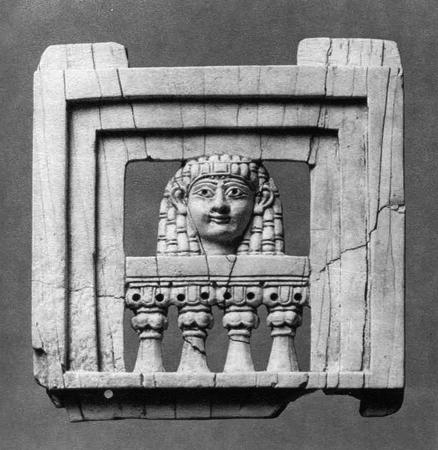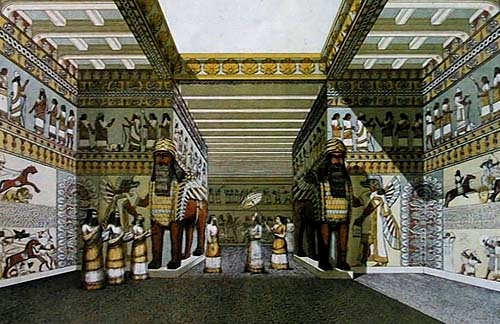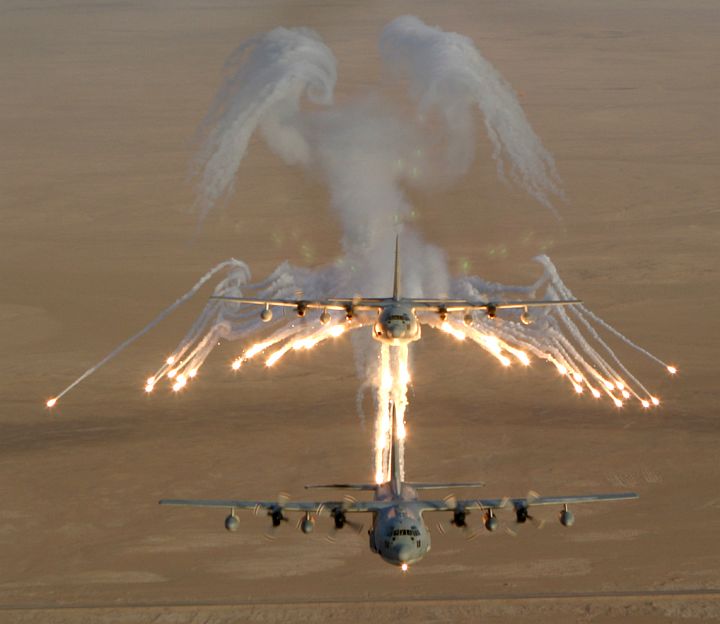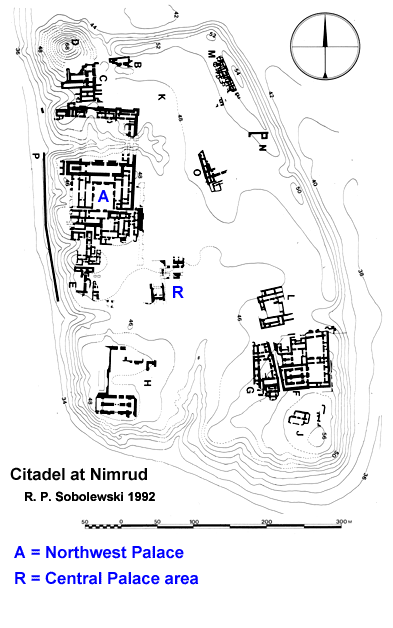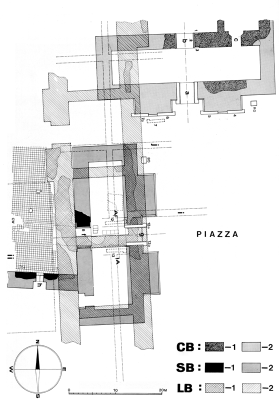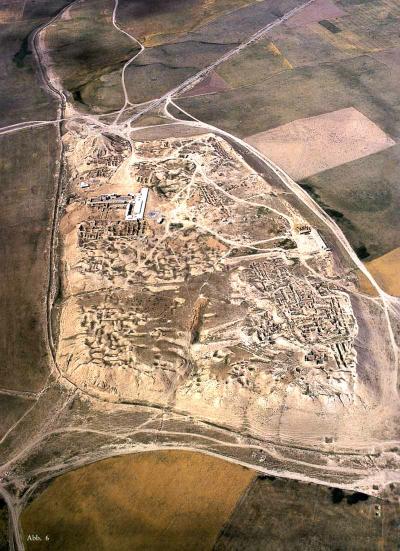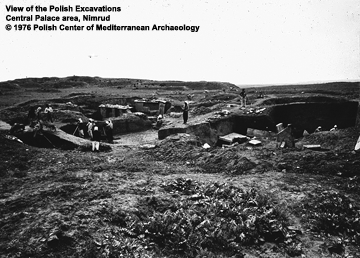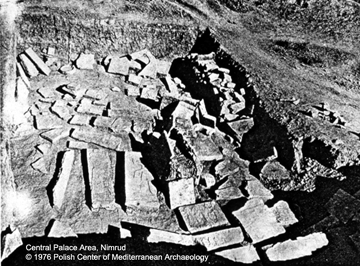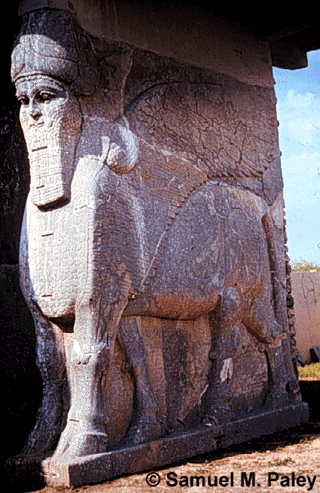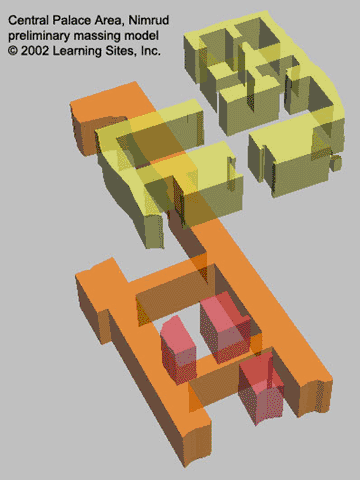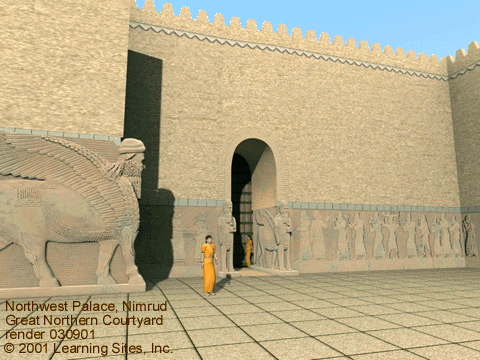|
Looting of Iraqi Treasures |
|||||||||||
|
..
By Alexander Zemlianichenko, AP WASHINGTON
(AP)
Thousands of antiquities missing from the Iraq National Museum have been found but not returned because citizens won't hand them over to either their American occupiers or remnants of the hated former government, U.S. investigators say. The investigators are trying to recover an unknown number of artifacts looted from the museum after the fall of Saddam Hussein's Baghdad. Members of the museum staff have "sworn on the Quran not to reveal the ... secret place" where they hid treasures for safeguarding before the war, chief investigator Col. Matthew Bogdanos said Friday. He said that while the loss of "a single piece of mankind's shared history is a tragedy," it's now clear some early estimates of 170,000 pieces looted was a great exaggeration. His three-week-old investigation so far has recovered 951 stolen items. Some were brought in under a no-questions-asked amnesty program and others were found in raids, he told Pentagon reporters in a videoconference from Baghdad. Well over 47,000 other items have been located but remain under control of Iraqis who won't relinquish them — including the staff of the Baghdad museum who have been working with Bogdanos' investigators. "The investigation ... uncovered the existence of a secret storage location that has been used by the staff since 1990," Bogdanos said. "They won't divulge the place until the United States leaves and there is a new government," he said. They have promised investigators an inventory of the items stored there. Elsewhere, a "neighborhood watch" is guarding over 300 boxes containing thousands of precious manuscripts and books the staff moved into a bunker before the war, Bogdanos said. American forces agreed to that arrangement after community leaders said they didn't want to return them to a museum staff they associated with Saddam's fallen government. Iraq's prized collection held millennia-old artworks from the Assyrian, Sumerian and Babylonian cultures. Ancient Mesopotamia — modern-day Iraq — was the cradle of urban civilization. Some experts fear thousands of pieces of art, including priceless antiquities, may be missing. "We know what's missing from certain rooms, but when you get to storage rooms that contain upward of 100,000 different pieces, each of which has to be individually counted and catalogued and compared against an original excavation site number, that's going to take time," Bogdanos said. Some of the excavated items are small shards of pottery. The 951 pieces recovered include one of the oldest known bronze relief bowls, a pottery jar from the 6th millennium B.C., one of the earliest known Sumerian statues and an Assyrian statue from the 9th century B.C. Perhaps the most valuable item missing is a white limestone votive bowl from Sumerian times, commonly called the Sacred Vase of Warka, Bogdanos said. Some of the stolen items have already started appearing on the international art market and at least one suspected piece was seized at an American airport, FBI officials have said. Bogandos' team of investigators from the military and the Immigration and Customs Enforcement agency also reported that:
"The majority of the work remaining, that of tracking down each of these missing pieces, will likely take years," Bogdanos said. "The United States government, the United States Central Command and this team are committed to restoring these priceless treasures of our history to their rightful place." Copyright 2005
The Associated
Press. All rights reserved.
|
|||||||||||
|
Who stole Iraq's priceless treasures? ..
April 13, 2008 Five years ago, as the tanks rolled in, history's most priceless treasures vanished from Iraq. What really happened still confounds world experts. Now, for the first time, Britain's leading authority on Iraq archeology and a witness to the devastation, delivers his verdict. SOURCE: http://www.timesonline.co.uk/tol/news/world/iraq/article3721584.ece |
|||||||||||
|
The Iraq War & Archaeology Reviewed Articles Archive Zero: Through the Second 1/2 of March 2003 ..
A hugh archive of dat about the Lost Treasures of Iraq in a photo, link and text archive covering May 2003 to 2006. This archive is an excellent resource on the subject of lost and looted sites, US involvement and recovery efforts. It is also a valuable site for actual photos of the items |
|||||||||||
|
USMC Photo of the Day: Message from a KC-130 "Hercules" to the challengers: Retire the SAMs--now! ..
Central Command Area of Responsibility, 4 September 2003: Aerial shot over Iraq of a KC-130 "Hercules" assigned to Marine Aerial Refueler-Transport Squadron Two Thirty Four (VMGR-234) firing flares used to counter attack surface to air missiles. The Photographer
The Big Photo
The Courtesies
|
|||||||||||
|
Iraqi Officials to Hide Babylon Antiques to Protect Them From Bombing ..
ended up in black markets in Europe and North America MOSUL, September 30 (IslamOnline & News Agencies) - Officials in Iraq have started to pack away the treasures of Assyria, Sumeria and Babylon at the archaeological sites and the museum at Mosul in preparation for the war to come, a U.K. newspaper reported Monday, September 30. The Independent said that a lesson has been learnt from the damage inflicted in raids by American and British bombers in the Gulf War, and the looting which followed in its immediate anarchic aftermath. The paper quoted Manhal Jabar, the director of antiquities, talking of his worries that still far too much will be left exposed. The city and its hinterland has been repeatedly targeted by the allies. Last month, they destroyed the radar at the airport. Now, the fate of the priceless antiquities at Mosul is causing deep international worry, said the Independent. Jabar was in London last March discussing the problem with British specialists, including Professor David Oates of Cambridge and John Curtis of the British Museum, the paper said, adding that two ancient sites were damaged by American bombs in 1991 while a leaning minaret built in 640 narrowly escaped destruction in 1994. "It is obviously something that is causing unease. If there is war, and they are saying this war is going to be even worse than 1991, then we must accept there will be losses to this heritage," the Independent quoted Jabar as saying. According to the paper, the plan is to move the antiquities to underground vaults, the locations of which are being kept secret, not least to prevent the kind of systematic theft which took place in 1991, when the Iraqi regime lost control of parts of the country. Stolen items from museums and sites ended up on the black market in Europe and North America, the Independent said, adding that among the wealth of archaeology surrounding Mosul is Nimrud, which became the second capital of Assyria in 1283 BC. SOURCE: http://www.islamonline.net/english/news/2002-09/30/article06.shtml |
|||||||||||
|
UPDATE: What's Next for Iraq's Antiquities ..
Winged bulls and lions with human faces stand guard at the gates of Nimrud, but they didn't protect the site from looters seeking more of the palace's riches. Nimrud's gold was unearthed in the tombs of Assyrian queens by Iraqi archaeologists betweeen 1988 and 1990. American soldiers now patrol the site, where more artifacts may still await discovery. National
Geographic
This summer more than 600 antiquities looted from the National Museum in Baghdad were recovered in New York, Rome, and in a third, undisclosed, location. That's the good news—a glimmer of hope for historians, anthropologists, and archaeologists who have witnessed the war in Iraq and its bloody aftermath turn into the serial rape of a cultural heritage in a region that was a cradle for humankind. The continuing bad news, says Henry Wright, a professor at the University of Michigan's Museum of Anthropology, is that the looting and ransacking of vulnerable archaeological sites is likely an everyday occurrence. In a September 8 interview Wright, who led a National Geographic expedition into Iraq at the end of the war to assess the extent of looting and damage to museums and ancient sites, Wright said that the systematic destruction is distressing. But there are bright spots. Wright said that in the northern reaches of Iraq near present-day Mosul, where the biblical city of Nineveh once flourished, United States troops, particularly Army detachments from the 101st Airborne Division, had established small garrisons to protect some of the major sites. "We have no reason to believe that has changed," said Wright. Somewhat more distressing to archaeologists, however, is the situation in the area around Baghdad and in central Iraq, where Wright said the reports he hears offer no definitive information. "When we visited a number of sites in May, we found them perfectly okay, but we simply don't know today," Wright said. When Navy Seabees with the First Marine Expeditionary Force entered the Babylon area at the beginning of the war, they discovered that looters had been there first—pillaging sites with histories that span thousands of years. It was in this region, located in the narrow plain between the Tigris and Euphrates Rivers, that a farming-based civilization dawned. The Seabees occupied a fortified area, which included one of history's most important archaeological treasures, and named it "Camp Babylon." It is in the far southern zones of Iraq where the looting is most rampant, and likely continues, Wright said. When his team visited last spring, they saw a pockmarked land left behind by well-armed and organized bandits seeking treasures for the illegal international antiquities market. In other cases the thefts were probably the result of poor local people hoping to find an item they could sell in bazaars. "They tear these sites apart because these heaps of debris have no meaning to them. To find one thing that would happen to be popular on the antiquities market requires ripping through great volumes of deposits that have a story to tell." "Hundreds, if not thousands, of those stories are now lost," Wright said, comparing the losses to tearing out and tossing away the unread pages of a history book. As discomfiting as the situation is for the plundering of antiquities, Wright said that archaeologists mourn the obliteration of important items of so-called lesser value that often give clues about the everyday lives of people who lived through the rise and fall of kingdoms. In still other instances, villagers were not intent on ancient history, but were digging in areas for the bones and bodies of friends and loved ones thought to be in mass graves and burial sites left in the violent wake of Saddam Hussein's regime. Though the protection of the sites throughout the country is precarious, Wright said that the best hope is that an emergent Iraqi government would take control of site protection. It is reported that the Coalition Provisional Authority has assigned helicopters to fly over the major archaeological sites. It currently maintains guards at Babylon, Hatra, Nimrud, and Ur. There is also some help coming from the United Nations. UNESCO held a meeting in Tokyo in August attended by 30 archaeologists and experts. They formed the establishment of an International Coordination Committee for the Safeguarding of the Cultural Heritage of Iraq. And yet, with Iraq's estimaged 10,000 important sites, the task of protecting Iraq's archaeological treasures is formidable. The region, which is known as the cradle of civilization, is now a place of violence and pillage, where the ancient clues of how humankind rose above a grim existence are being obliterated each day. SOURCE: http://ngm.nationalgeographic.com/ngm/0310/feature3/online_extra.html |
|||||||||||
|
Visualizing Iraq's Cultural Landscape ..
Sample Data
For USACE Iraq GIS
Project
John Simmons, Chairman
(JohnSimmons@BaghdadMuseum.org)
Presented to:
Introduction The U.S. Army Corps of Engineers is currently creating a comprehensive GIS for Iraq, primarily for use in peacekeeping operations, but also for use in helping to manage reconstruction projects throughout Iraq. The Baghdad Museum Project is a public-private partnership dedicated to preserving, protecting and further cultivating the cultural heritage of the people of Iraq through multi-sector and multi-disciplinary dialogue and exchange. GIS is ideally suited to integrate and manage data representing diverse perspectives in a group problem solving process. Hence, it would be a valuable tool for not only those contractors involved in rebuilding Iraq, but also those institutions devoted to protecting Iraq's cultural property, as Iraq has over 10,000 archaeological sites and, to date, an estimated 90% of its cultural artifacts have yet to be excavated. If the USACE GIS can include archaeological and cultural data along with the other data presently planned for inclusion, then Iraq's cultural dimension would be more readily accessible in the planning stages for a new Iraq, and a cultural strategy can be developed to help foreign companies and investors form long-term partnerships with the Iraqi people. Meanwhile, throughout the world, the USACE would be helping to provide a new learning resource to teachers and students, and a tool to the archaeological community and cultural institutions for cultural resource management. To this end, the Baghdad Museum Project is proposing to work with the USACE Iraq GIS team to provide archaeological and other cultural data, and develop web-delivered GIS applications that would combine the cultural data with other data the USACE will make available to the public. Participants will include faculty and students from the Computer Science Department at George Mason University, members of the Multi-Sector Crisis Management Consortium of ACCESS.DC (operated by the National Center for Supercomputing Applications), Dr. Lowell Christy of the Cultural Strategies Institute (www.CulturalStrategies.org), Dr. Donald Sanders of the Institute for the Visualization of History, and members from the local Iraqi-American community. Types of Cultural Data The Baghdad Museum Project seeks to: 1. establish a comprehensive online catalog of all cultural artifacts in the museum's collection to help locate them, discourage illegal dealing in these antiquities, and encourage their safe return to the museum's curators; 2. create a virtual Baghdad Museum--a content-rich publicly accessible Website--in order to stimulate cross-cultural appreciation and dialogue, incorporating interactive streaming video, GIS, 3D navigation, and online classrooms; 3. build a 3D collaborative workspace within the virtual Baghdad Museum to allow international multi-sector and multi-disciplinary teams to work together on renovation designs, exhibit layouts, new building proposals, and fundraising for museums around Iraq, as well as cultural strategies for organizations involved in the rebuilding of Iraq; and 4. establish a resource center within the virtual Baghdad Museum for community cultural development, offering experiences, ideas, and success stories that show how culture can contribute to human development, and how people can contribute creatively to their own culture and can thereby strengthen their historical memory. The Baghdad Museum Project proposes integrating the following types of data through one or more ArcIMS interfaces: * Latitude/longitude of sites and buildings * Archaeological site plans and photos * 3D models of sites and other visualizations or depictions of ancient communities * Photos of objects in the Iraq Museum relating to the sites, as well as text and multimedia * Links to a collaborative authoring system that is kept open to multiple sectors For an overview of the Project's virtual heritage designs, see this draft paper for the Virtual Systems and Multimedia Conference in Montreal, October, 2003. The following are samples of the data and links described above. Latitude/Longitude Assyrian capitals * Khorsabad --
Dur-Sharrukin 33o
20' N 44o 13' E
Babylonian cities * Aqar Quf --
Dur-Kurigalzu 33o
24' N 44o 18' E Map 2
Later sites * Hatra (Parthian
capital city)
Major excavated sites * Tell al-Hawa
36o 43' N 42o 27'
E
Caves * Shanidar cave
37o 05' N 43o 52'
E
Museums * Ctesiphon
Location Data sources: M.D. Roaf, Cultural Atlas of Mesopotamia and the Ancient Near East; compiled by Nicholas Postgate jnp10@cam.ac.uk and Dr Eleanor Robson eleanor.robson@all-souls.ox.ac.uk. Site Plans and Photos
3D Models (and other depictions)
Photos of Objects
For our current photo exhibit see The Treasures of the Iraq Museum in Baghdad.
Collaborative Authoring The Bagdad Museum Project anticipates using one or more instances of a collaborative authoring platform based on an opensource engine, MediaWiki. This would permit members of the public such as students, teachers, artists, etc., to easily contribute materials to an openly shared resource. A separate instance of the platform would be reserved for registered members of a community of interest, available to the public read-only. For an example of such a platform, in which all links lead to pages that can be freely edited, expanded and revised (while archiving all versions), please click here. The Project will develop ways to link to specific clusters of entries based on areas selected on a map using the ArcIMS tools.
|
|||||||||||
| FAIR USE NOTICE: This page contains copyrighted material the use of which has not been specifically authorized by the copyright owner. Pegasus Research Consortium distributes this material without profit to those who have expressed a prior interest in receiving the included information for research and educational purposes. We believe this constitutes a fair use of any such copyrighted material as provided for in 17 U.S.C § 107. If you wish to use copyrighted material from this site for purposes of your own that go beyond fair use, you must obtain permission from the copyright owner. | |||||||||||
|
|
